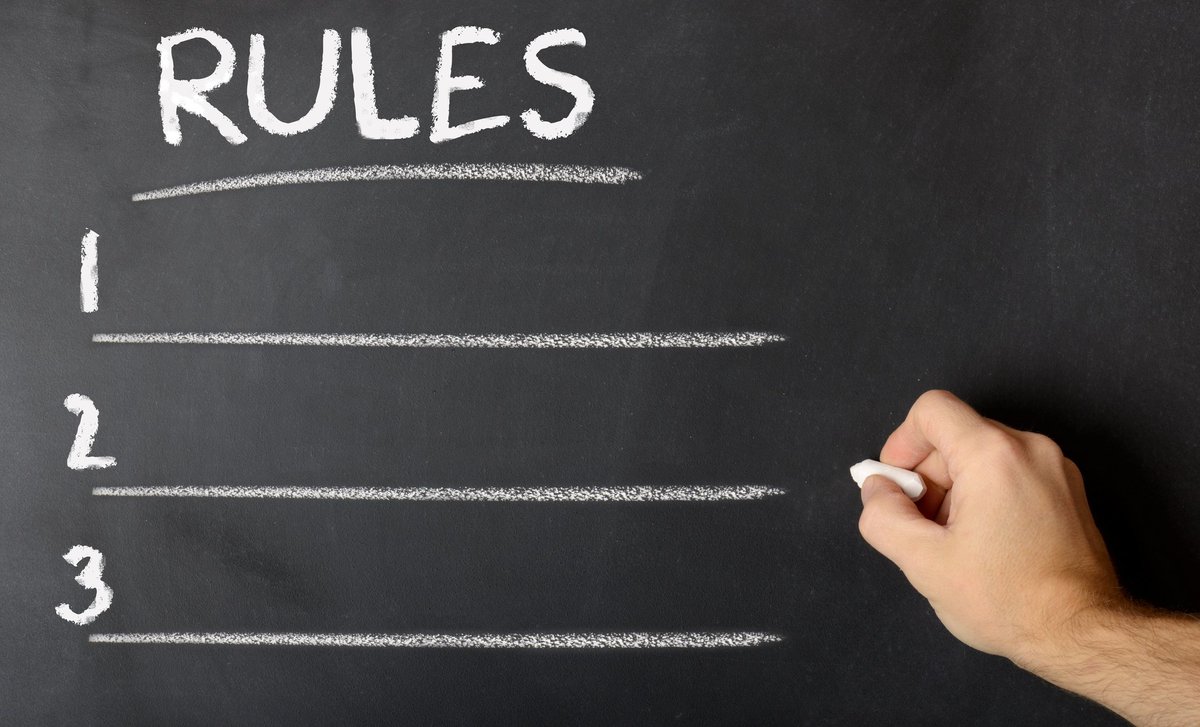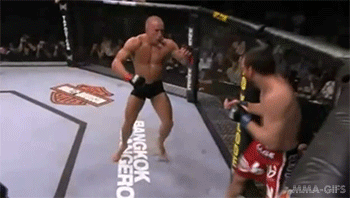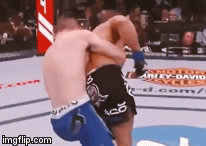
Ninety percent of martial arts or combative schools have rules when they fight, especially when doing pressure testing or sparring.
Yes even your school with eye pokes and groin kicks. You all train with rules whether you know it or not.
My school we could tap the groin if someone had a cup, and indicate eye pokes. But if you soccer kicked someone’s cup full force, you’re going to get in shit, same with jabbing your fingers hard in the eyes. The rules are loose, but they are there, especi
Krav Maga will teach all sorts of dirty stuff, but it’s never practiced under pressure, never when someone is resisting. The few Krav Maga schools that spar certainly don’t full on groin kicks or dig fingers into eyes, throat punch. If they did, the insurance would go way up and the rate of injury would be much higher.
The fact is every martial artist whether focussed on counter assault or sport combat does drills, and drills are seperate from sparring in that they are limited, they have rules. Sparring has rules as well for safety or to conform to success in the sport.
Even the army that does Milling has ground rules. Someone gets knocked down doesn’t get kicked, they don’t let the guys head butt each other, no elbows. But they are going as hard as they can.
I won’t even say rules are a bad thing. If you want to work on your skills to take someone down or throw them, you remove all striking. If you want to limit ground work, you create a time limit for the ground. If you want to learn to fight off your back, don’t reward pins.
Boxing has many rules, but boxing will teach you to wreck the crap out of most people, same with werstling. The rules isolate a skill to take it to the highest level possible.
Yet even as I say rules are a good thing, it’s always good to keep in mind how they limit you, and more important than how they limit you is how they shape your preferences.

I showed one of my students today Daido-Juku Kudo, which allows almost every form of striking. He said they look spazzy compared to Muay Thai or boxing.
But remember my article about headbutts changing everything? Elbows and headbutts being allowed changed Daido-Juku. Where they have conventional defense on the outside, but when they are in the inside they don’t cover much, they slip while striking not in isolation. Why? Becausue when you can start head butting and elbowing, it cuts through everything and stuff becomes way more bare basics on one level, and then on another level the subtle mechanics and movement becomes more complex.
Kyokushin for instance looks like two guys doing rock-em-sock-em robots. But they are doing subtle shifts of their body to absorb and mitigate strikes and to deliver them. You allow head punching and bare knuckles like Daido-Juku with these guys and it will well…look like Daido-Juku.

People have often made the same comment about Lethwei, how it looks more crude and basic than Muay thai which seems more refined and complex. But like I wrote in the previous article, a great deal of that goes out the window when head butting alone is allowed, the clinch causes less stalling and makes it harder to halt midrange striking.
And so often Lethwei looks like the above. As Steve Morris would point out, it would resemble army milling.
The guard is good to know, but ever wonder why in most of history people valued the pin more than the guard? It existed in grappling in some form, but it was never emphasized other than BJJ.
Because if people have a basic grasp on riding the guard or passing it, it make the guard a far less comfortable place to hang out. In BJJ it’s neutral territory. But in any ruleset with striking is allowed, it’s just stalling while your opponent gets shots on you.


That doesn’t mean the guard is not a position to master, you better be good at it, because if your guard sucks, you’re in for a hard time when someone wants to pound you from above.
But BJJ schools often like to stall or just sit there.
Khabib has gone on his back in his old fights, but his guard is active. He does not like to stall with it, he’s constantly attacking. He’s not comfortable there, so he is very proactive.
EVen if you get rid of rules, or tailor make them, the rules inside your training space dictate the manifestation of your fighting the most.
The thing is, the way you train can reflect exactly how you fight, assuming your training reflects the natural reactions of the body when violence happens.
Sometimes the rules we dictate can be so utterly unnatural, that the way we train absolutely falls apart the moment adrenaline begins pumping, when real fighting happens.
I could make excuses for the video above. Some points i’ve made before in a different context. As I said before, many drills will show up in real fighting, but it’s so subtle you can’t tell what’s happening, as many drills train “Micro moments” as Rick Wilson says, and Steve Morris also talks about how many practices come from snapshots in a fight.
All of the above is true.
But the fact is I’ve done enough Tai Chi to know the way they practice, and the way they show and expect application looks absolutely nothing like the above(I can’t speak for white crane, I don’t do it)
What makes Tai chi so good to study can often make it your worst enemy in a fight. Vertical posture, sinking, flowing and adhering are all great skills. But they push it as an ideal that must remain throughout the fight, rather than knowing that violence forces us to move and do things that are far from the ideal mechanical principles, and the principles apply by simply finding them in imperfection.
Now what do principles have to do with rules? Well sometimes drills are stopped or broken when principles are violated (as often they should be) and the rules of the drills are to embody the principles as much as possible.
There actually is no problem with this, but usually people go from training drills in the most perfect manner right straight into fighting, where either they fight completely different from how they train, or fight so much like how they train it’s awkward and they get murdered.
Progressions are the key, careful progressions. Not just the level of resistance, but even the progressions of the rules. Things need to be allowed to fall apart little by little, and success is measured by salvaging it, and seeing how much of the structure and principles remain under pressure under natural reactions.
What does all this have to do with rules?
Simply pointing out that not only do rule dictate how you fight, but also how rules can often hinder what is natural, and make your fighting bad if you don’t use progressions that get to natural pressure and natural fighting.
The fact is, rules are not just a thing in combat sports or forms of sparring. It’s how you even do what you do. It’s every limitation or terms dictated in every technique repetition, under every time you do a drill. And yes when you spar or fight.


The famous words uttered by good old Nathan Diaz.
You do what you train, if what you train actually shows up in a fight. You do what the rules make you do.
Many MMA fighters with a wrestling base will shoot in when hit or overwhelmed instead of covering, and if you’re wrestling is good, it’s not a bad thing. Unlike the weird kung-fu fight above, wrestling calls on using natural human movement, reactions and physiology. ANd the rules reward a take down.
SO guess how wrestlers manifest themselves in a fight? They go for the take down. Or if they are in a bad position they…go for the take down.
In sport BJJ when someone is about to pass your guard or submit you, you hold them in closed gaurd to orient yourself. It’s very similar to what covering is used for.
And because BJJ largely rewards jumping guard and pulling guard that this is what most of them do, and guard is natural despite what people say, bears do it when fighting and gorillas. That’s right, for all the posts I make bashing BJJ guard pulling, I’ll say it’s a natural movement.

But come from a sport where closed guard is not rewarded, and people do something else when taken down.
What if when you’re taken down, the rules rewarded something else other than holding guard?

That’s some fine wrestling right there, and it was his ‘panic response’ due to years of fighting under wrestling rules. Scrambling when being taken down instead of going for the guard. If he did BJJ rules he would probably go to guard.

Stephen Thompson did kickboxing, but also years of point karate, and his natural instincts in fighting is to avoid getting touched no matter what, but to be able to ‘touch’ his opponent. As a result he values mobility and ‘in out’ over all other methods of striking. THe rules he trained under dictate how his fighting will manifest. He does train all sorts of rules, but the habits of point karate are there, and in the way Thompson uses it, it’s not bad.

That’s Muay Thai legend Baukaw.
Notice how compared to stephen Thompson, he and his opponent will literally walk right into the pocket and throw strikes. There is no in and out. The ruleset in Muay THai rewards pocket exchanges, and therefore Baukaws style manifests like that.
Everything we do about training is about rules. We set parameters of drills, and those are basically rules. We set safety or goals for sparring, and to conform to those are rules.
Even something like military milling has rules, no one is allowed to block, it specifically brings out a specific purpose.
You can train for a street fight, and maybe in a real life violent altercation you will totally be unleashed, doing things you would never do in practice or in the right. Some people have done that.
But still, habits are formed in the training hall, and those will influence us. Even ignoring the conventions hammered into us during practice is a deliberate act, something to consciously do more than unconscious at times. Even if it’s a moment of recognition that all habits must be broken.